This is the eighth of eight articles in a series covering the 1935-36 Fall & Winter GoldSmith Athletic Equipment catalog. Other than the Miscellaneous section, preceding each section of the catalog is a one-page cartoon about the history of that type of equipment, in today's case, miscellaneous football tools and equipment.
Click the appropriate link for other stories in the series:
Consulting Staff | Footballs | Shoes | Pants | Jerseys | Helmets | Shoulder Pads | Miscellaneous
The miscellaneous items section did not have a lead-in cartoon, allowing us to jump right into “side line” or sideline coats. The 1930s were a different football era, and that affected sideline clothing. Those on the sideline mostly stayed on the sideline during the single-platoon era, so the apparel did not need to be easily removed due to a turnover or special teams opportunity. Sideline coats could have buckles, and leg and foot bags could keep the deep substitutes nice and warm.
Knee braces were around back then and had been worn by football players since before the turn of the century.
GoldSmith offered a down box that was actually a box that possessed amazing mechanics that allowed the same number to display on all four sides. Other exciting products included high-top coaching shoes, shin guards, and the bucking strap, which came without handles.
Anyone but a dummy recognized the value of tackling objects that moved about or stood still. It’s not clear how many managers a team needed to operate the full system, but it was surely worth it. (Click the image to see the rope and trolley system.)
The well-appointed football team embraced jocks, cups, and ankle and wrist braces. The popular aluminum cup was lightweight. Hopefully, it came with a label warning the wearer to head inside at the first sign of lightning.
GoldSmth offered a line of products targeted at junior or youth players. The products resembled those worn by adults, but there were fewer options and, in some cases, only one size. Whereas the adult helmets came in various sizes, the junior helmets had only one size, though they had an elastic between the ears and back of the helmet to allow for some give.
Both youth shoulder pads have arm rather than chest straps, while the jerseys that cover them are plain. No stripes, no inserts, just plain standard colors.
Felt letters and monograms came in different variations used for football jackets and other sports. Some may have been used on football jerseys as well.
The chenille letters and emblems were primarily used for letter sweaters in the 1930s since letter jackets only hit the market then. Chevrons found below and the numerals found on the previous page allowed athletic studs to be properly outfitted.
Like the felt letters and monograms, emblems could be used for warmups for many sports and letter sweaters and jackets.
So, that brings the review of the 1935 GoldSmth Sporting Goods Catalog to an end. The cartoons allowed coverage of the history of each type of equipment, while the other pages revealed the state of the art of football gear in the mid-1930s.
Over the next several years, GoldSmith acquired the Draper Maynard and MacGregor brands and eventually chose to market their products under the MacGregor name. Still, GoldSmith was a major brand for decades, so a review like this can help bring awareness and appreciation for a brand that played an important role in the growth of football.
Football Archaeology is reader-supported. Click here to buy one of my books or otherwise support the site.


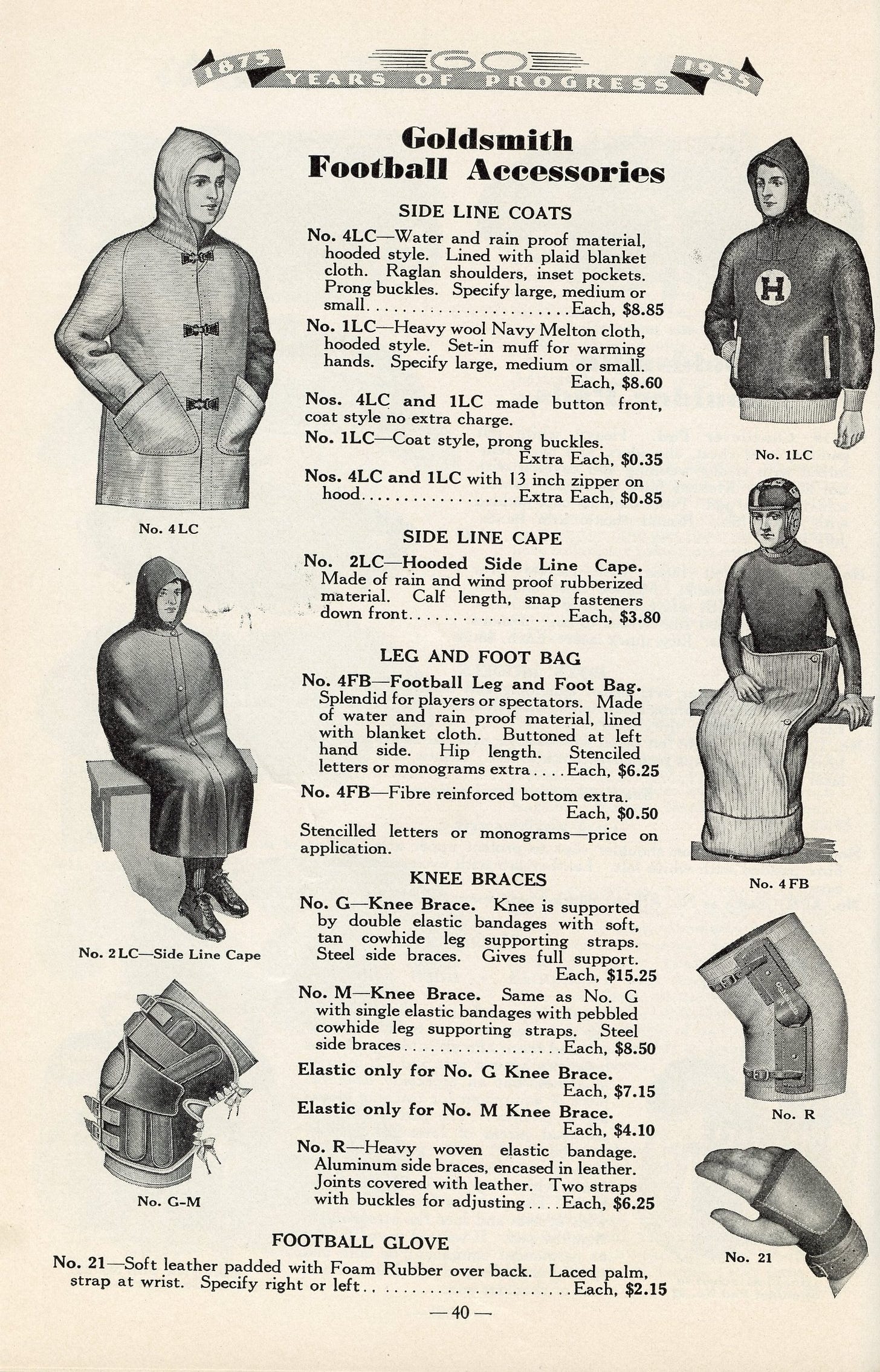
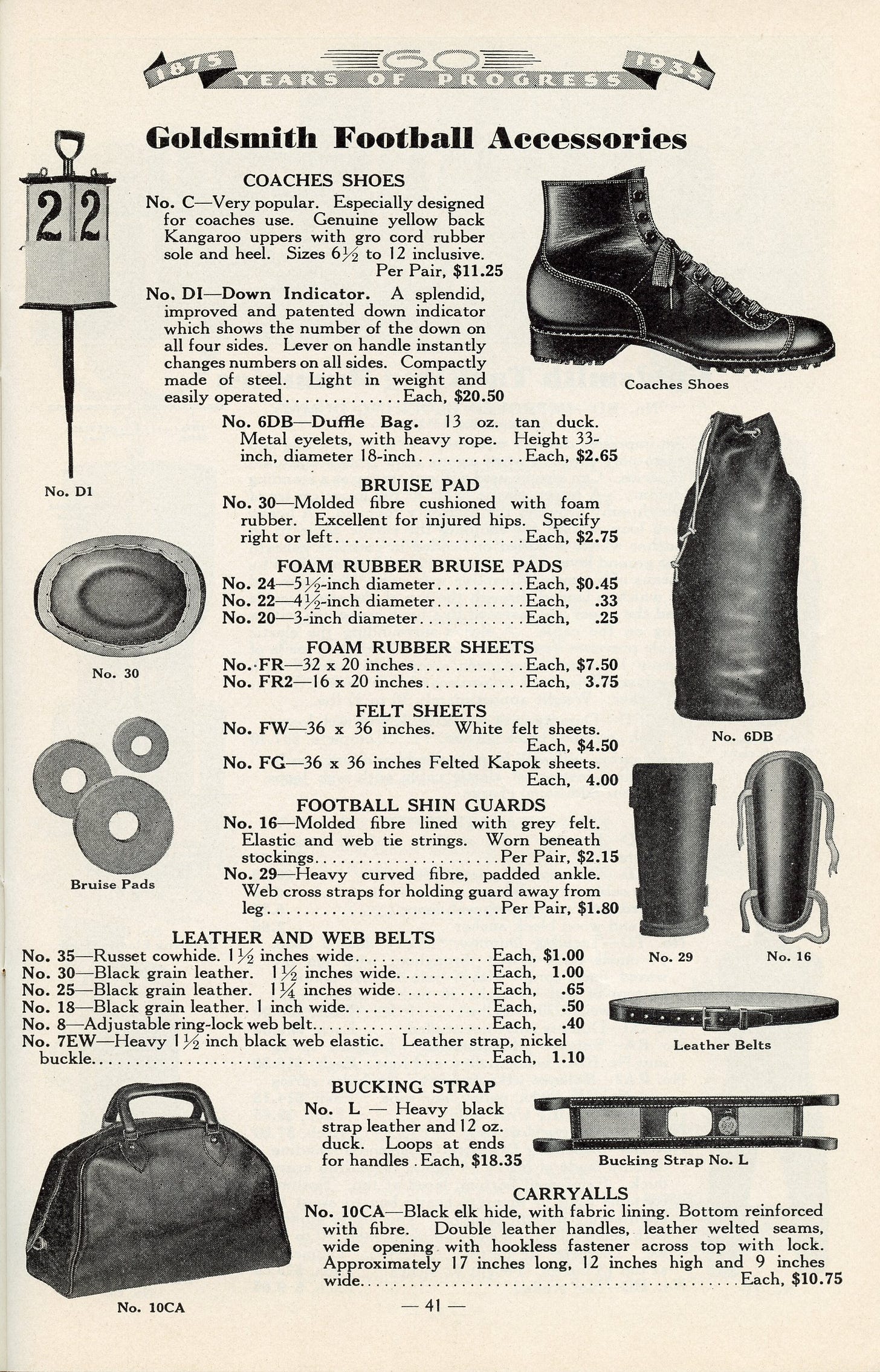
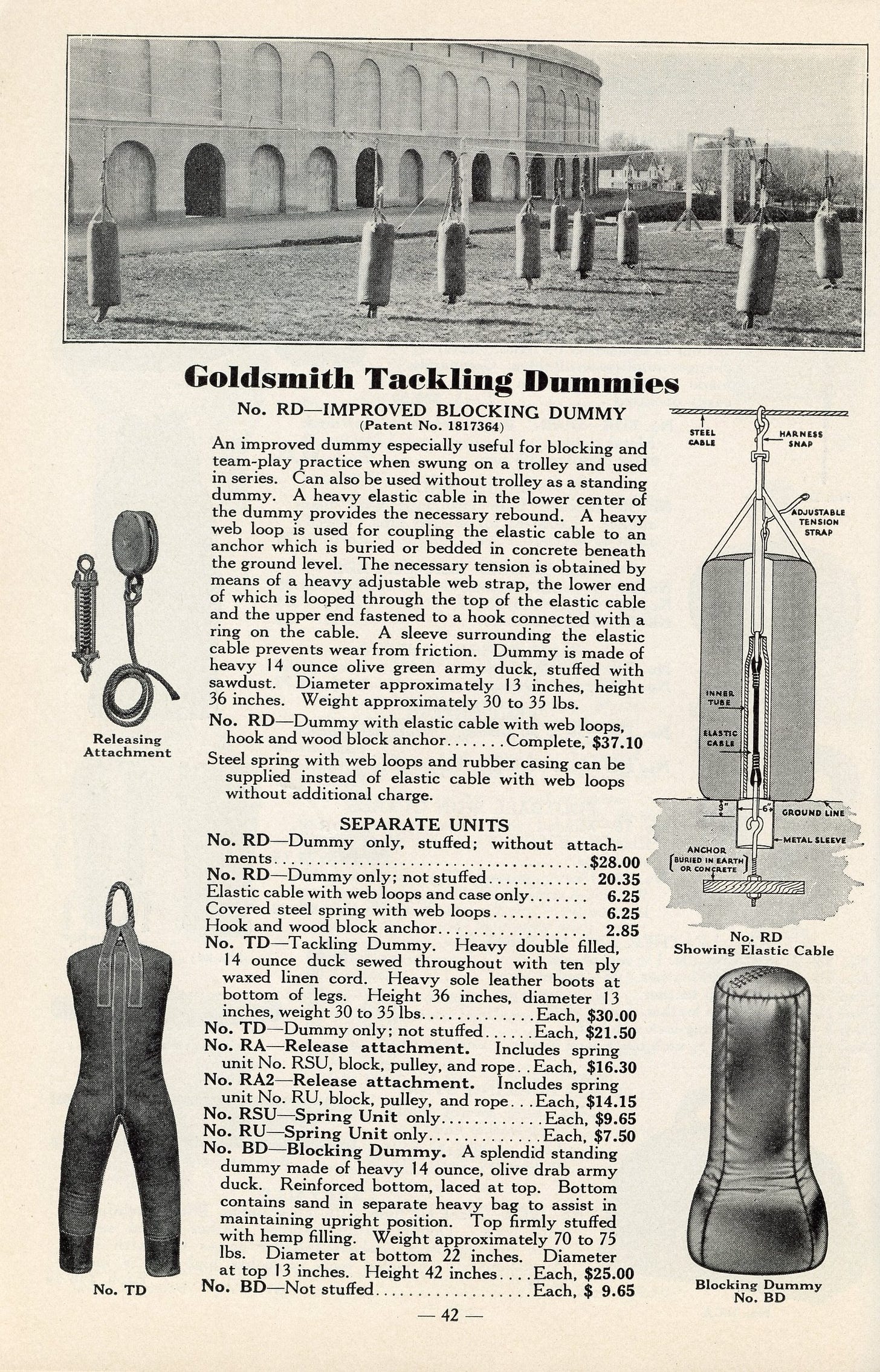
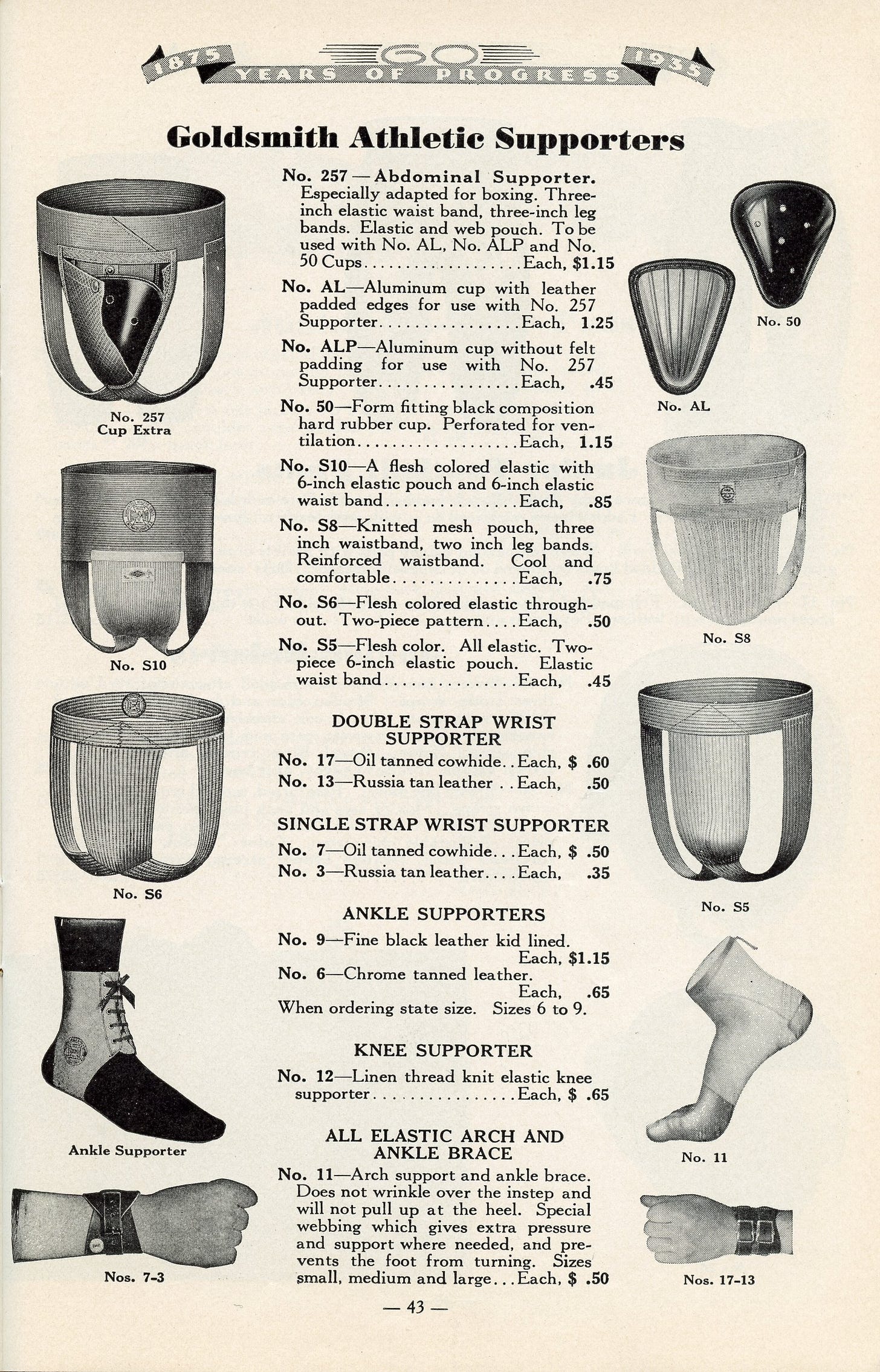
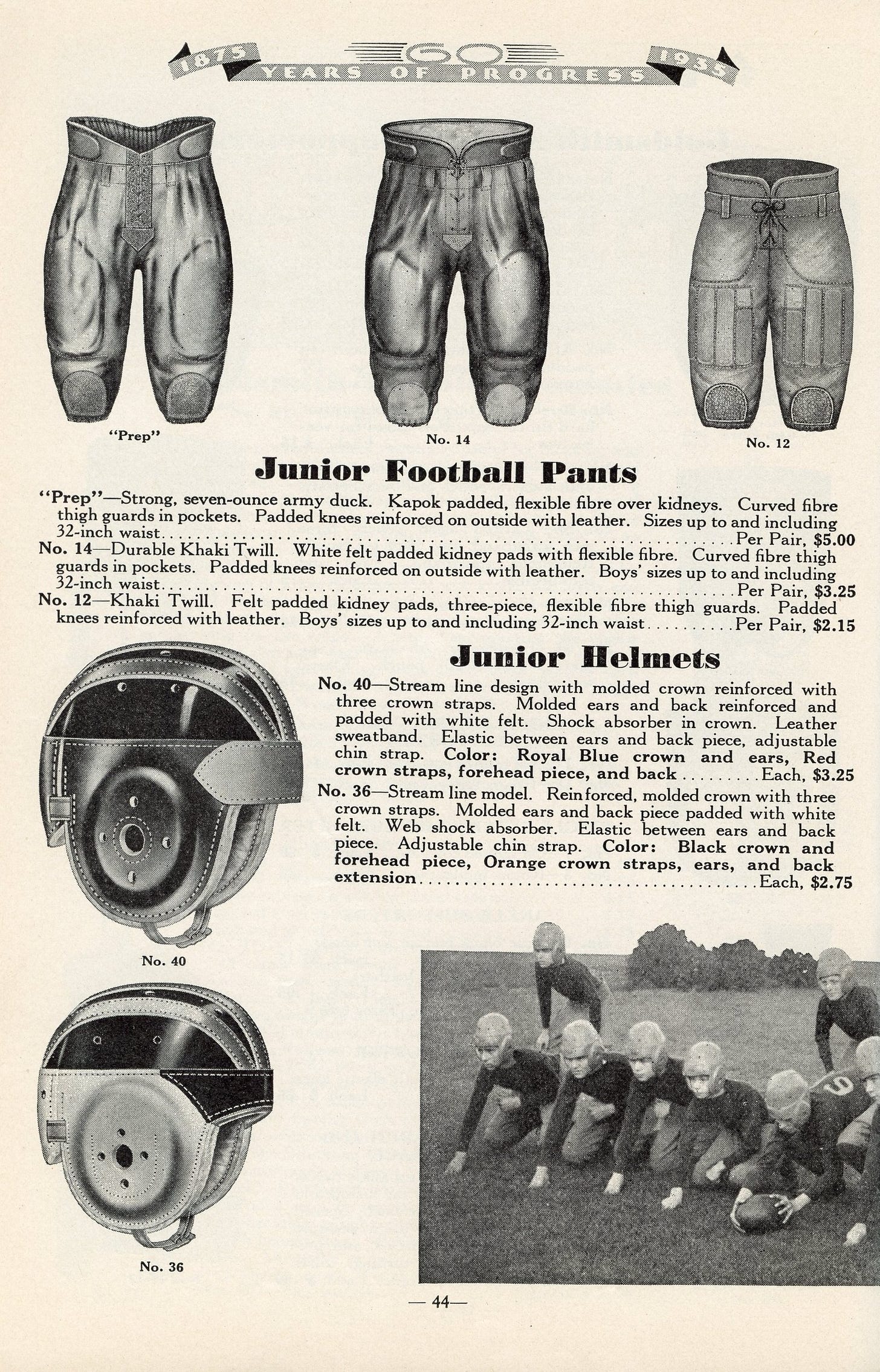
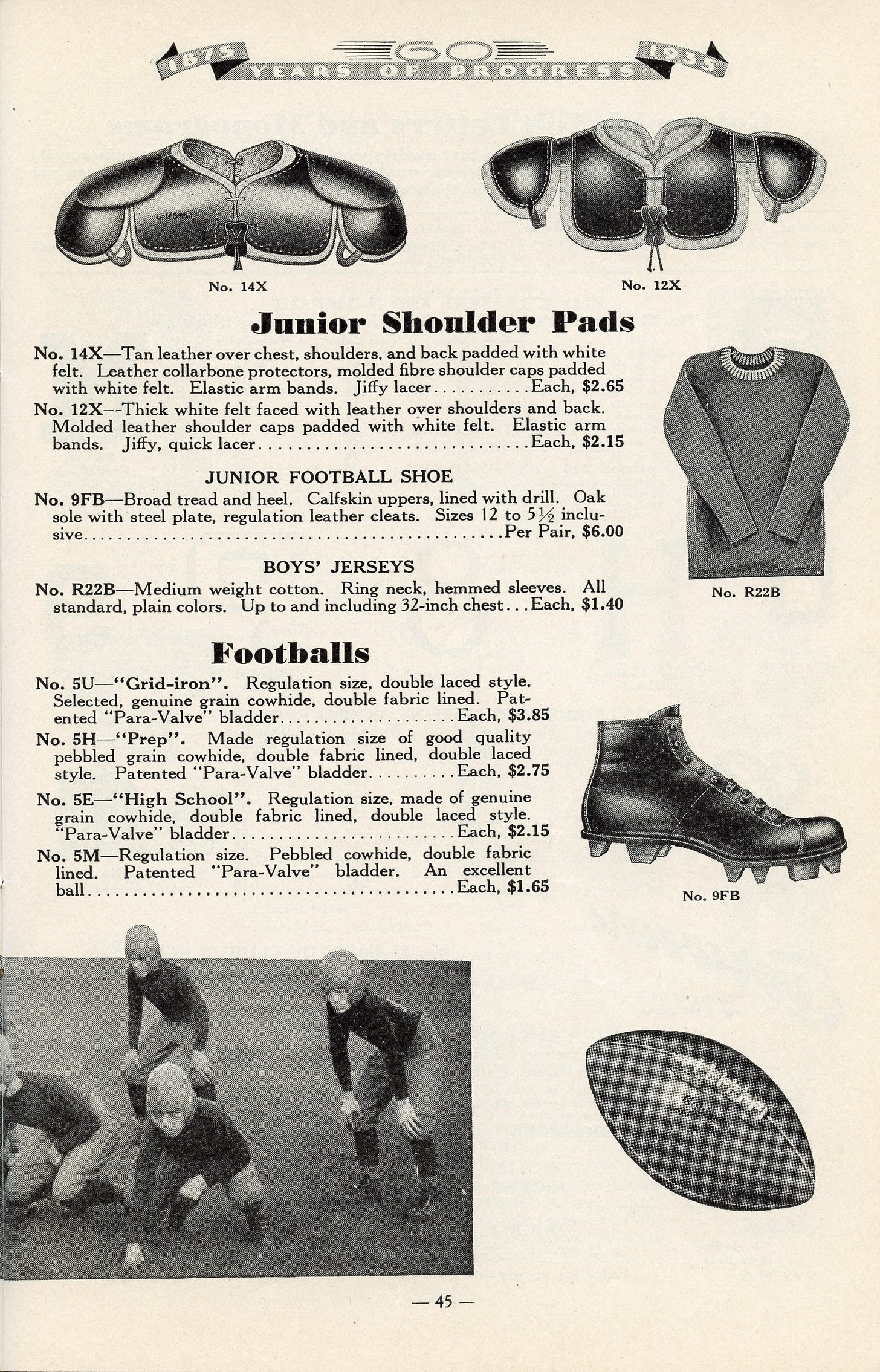
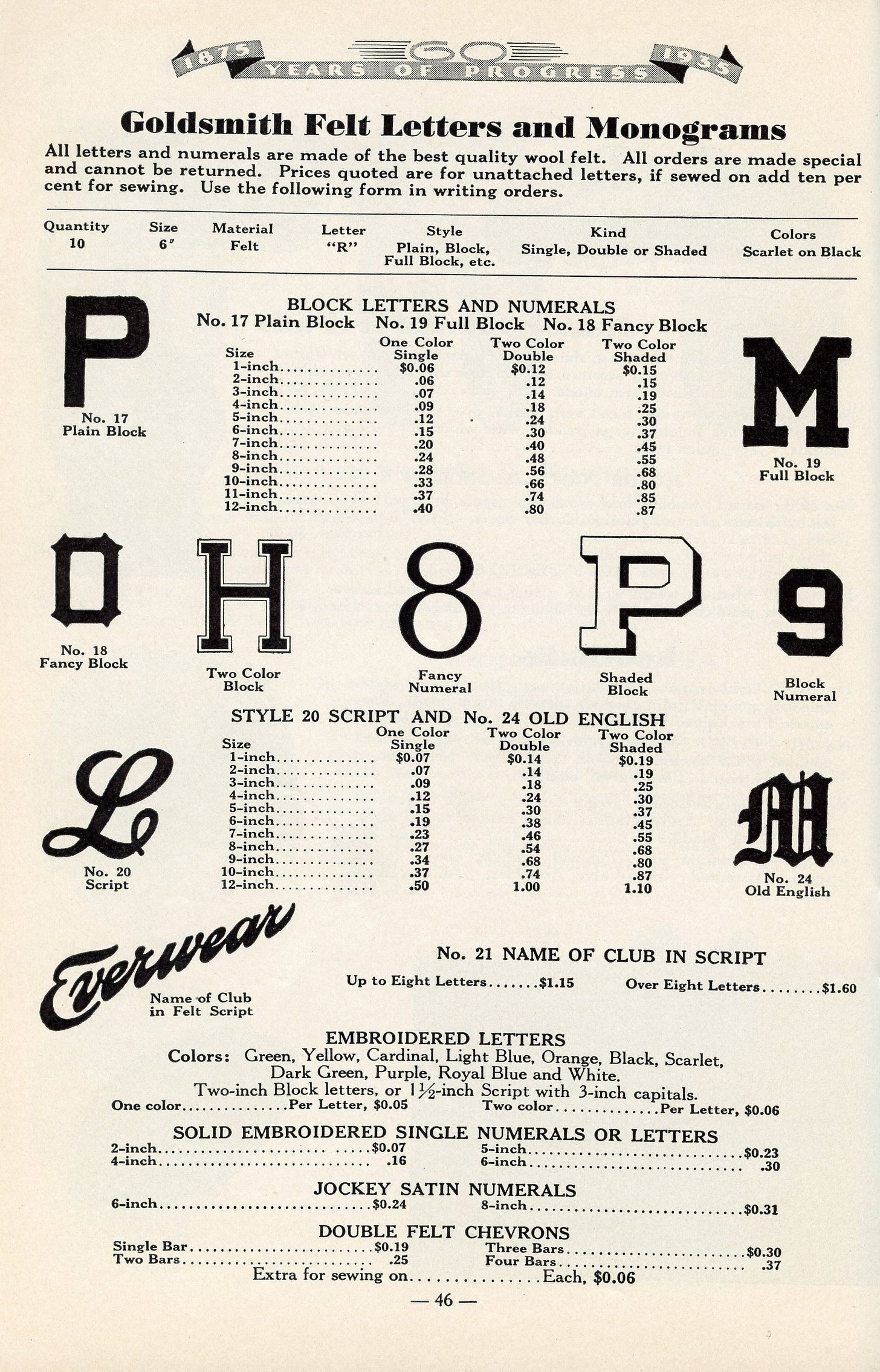
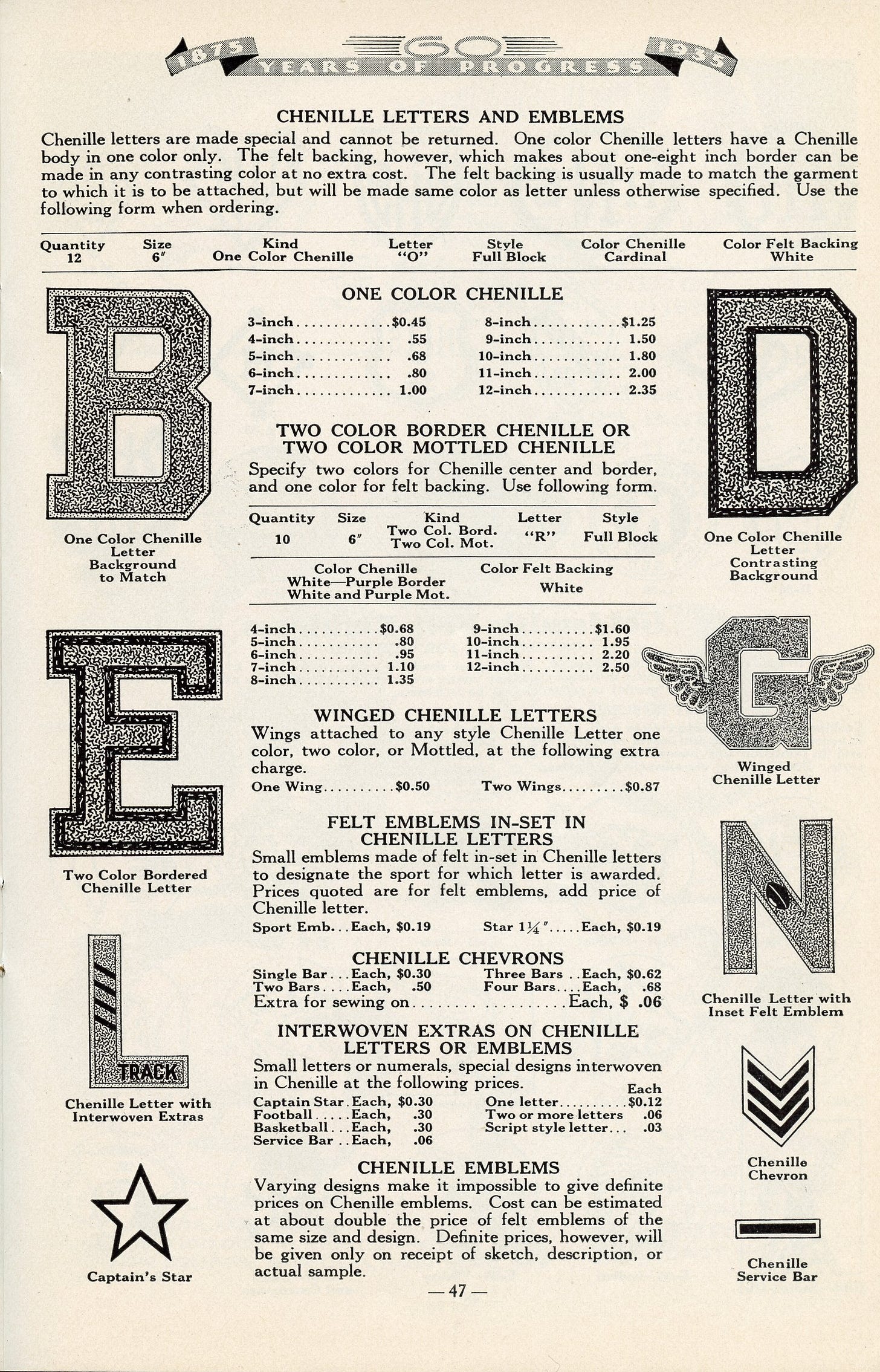
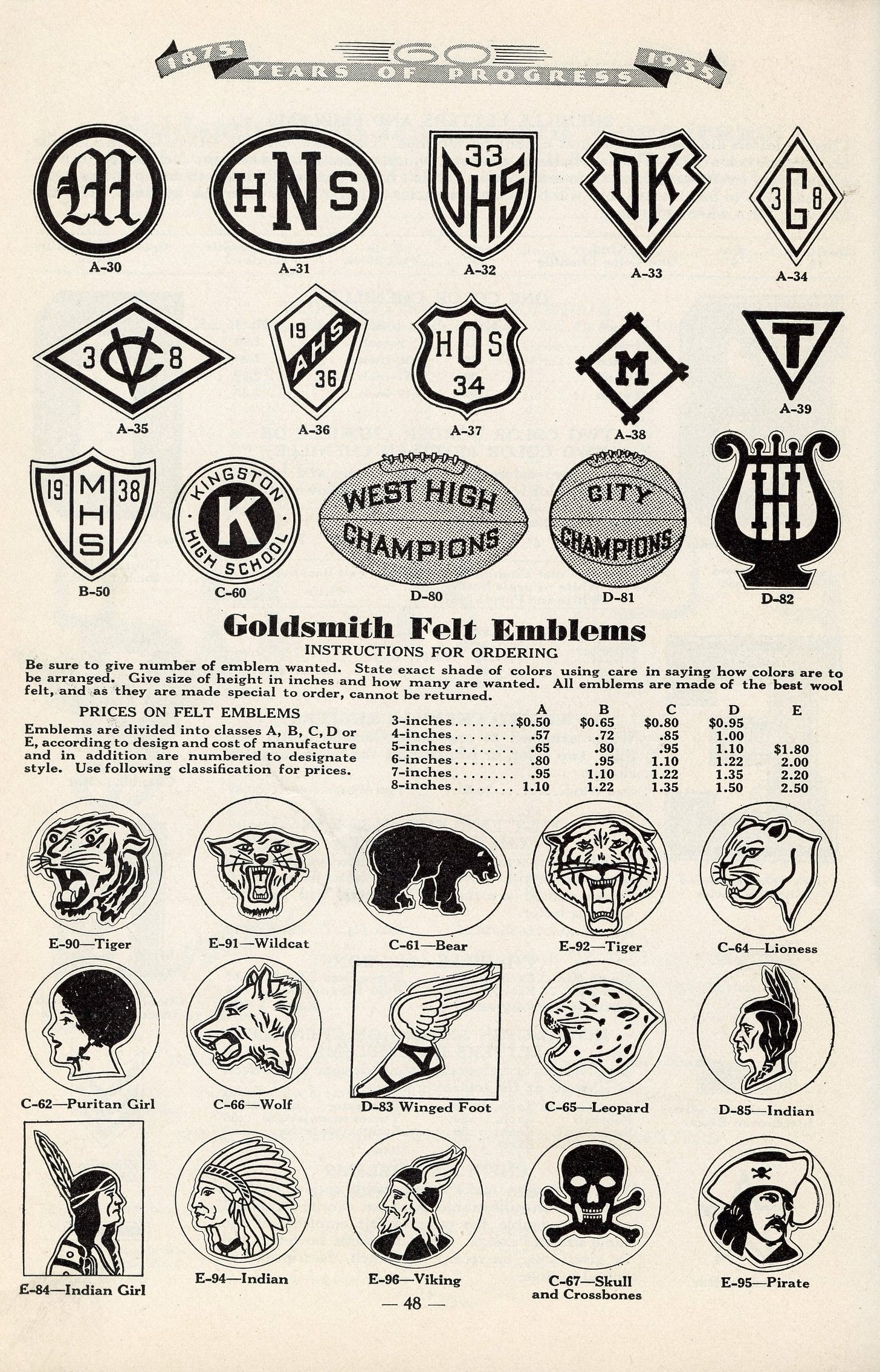
I love these vintage ads! I will take one Goldsmith foot and leg bag please. Sound like a great way to keep the feet warm watching TV this winter